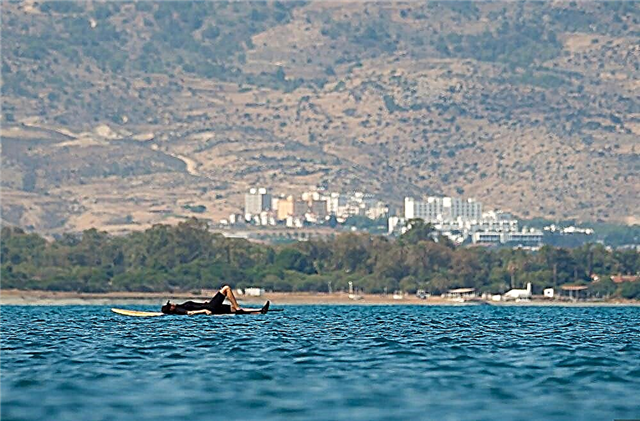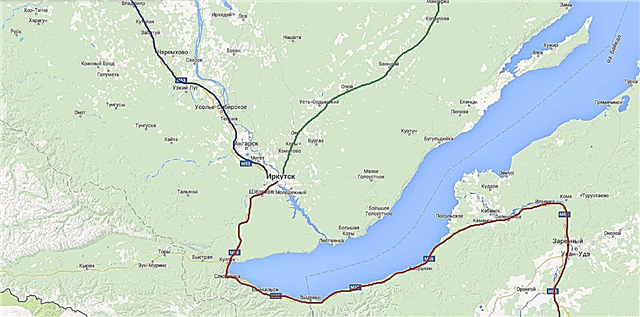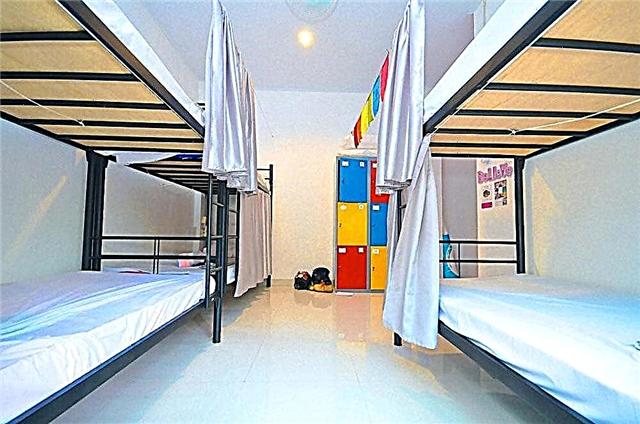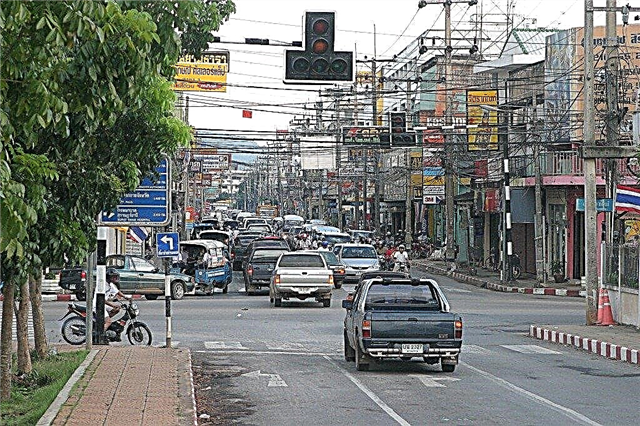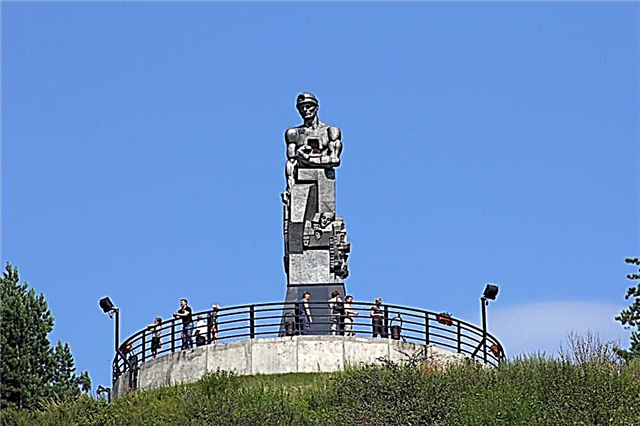When visiting the Kemerovo region, you will notice that the bias in the development of tourism is made on natural features and on the historical component. The region is rich in imprints of the past, which is illustrated by the "Tomsk Pisanitsa". Rare species and ecosystems are protected here, creating protected areas like the Kuznetsk Alatau. The region is also closely related to coal mining.
In cities, especially in Kemerovo, there are enough museums and galleries typical for all regions. They are equally familiar with their folklore and traditions in art, and also showcase collections of values of masters from all over Russia. Ethnography and archeology is another popular area. Although the infrastructure sometimes leaves much to be desired, some of the difficulties with accommodation and the road are more than compensated for by the vivid impressions.
The most interesting and beautiful places in the region
List, photos with names and descriptions of the main attractions in the Kemerovo region!
Museum-reserve "Tomskaya Pisanitsa"
Created in 1988 around a group of rocks: they have drawings dating from the Stone and Bronze Ages. Located on 140 hectares, 50 km from Kemerovo. In addition to viewing the images themselves, facing the Tom River, here you can get acquainted with the beliefs and mythology of Siberian peoples, visit buildings made in different styles (chapel, yurt), listen to lectures on archeology and other sciences.

Kuznetsk fortress
It has existed as a museum since 1991, and was built in the early years of the 19th century. It was designed to protect the city of the same name from the encroachments of its neighbors. After a couple of decades, it ceased to be used for its intended purpose. A number of buildings and structures were reconstructed, including the Barnaul Gate and barracks. The rest of the building is in varying degrees of preservation. Folklore events are held on the territory of the fortress.

Reserve "Kuznetsky Alatau"
Founded in 1989 on an area of more than 400 thousand hectares. Notable natural objects: glaciers, the Rastai river basin, Stanovy ridge, Krestovskie bogs, Lake Srednetersinskoe and others. Hiking, rafting, snowmobile routes have been developed. Staying on the territory of the reserve is possible only with a permit. Fishing is permitted along the route certified by the administration.

Celestial teeth (Tiger-Tysh ridge)
Location - south of "Kuznetsky Alatau". The height reaches 2178 m above sea level. The length along the Tom River is 90 km. At the foot there is dark coniferous taiga, on the slopes there is tundra, and the peaks are covered with snow. The ridge has several peaks; there are also waterfalls, streams, rocky ledges and valleys in the area. It is convenient to get there, there are wild hiking trails, and mini-hotels and guesthouses can be found nearby.

Kuznetsk coal basin
The more common name is Kuzbass. The first mentions date back to 1721. One of the largest coal deposits on the planet. The production is carried out both by the closed method and by the open method. The production volumes are growing from year to year. Transportation of coal, taking into account all the difficulties with roads and communications, makes its cost higher. There are also problems with the environment, sometimes there are accidents in mines.

Museum-reserve "Krasnaya Gorka"
Located in Kemerovo on the site of an inactive coal mine since 1991. Its purpose is to educate visitors about the history of the region, inextricably linked with coal mining. The museum itself settled in the former house of the manager. Other buildings of the industrial zone, as well as the surrounding nature, have been preserved. There are several permanent exhibitions, including "How Russia grew by Kuzbass".

Monument "In memory of the miners of Kuzbass"
The opening took place in the Kemerovo "Krasnaya Gorka" in 2003. The author of the project is Ernst Unknown. The total height of the composition is 12 meters, a granite pedestal of 3 meters and on it is a bronze figure of a miner holding a heart-coal. Coals-faces also lie at the base. The monument is a tribute to the work and resilience of those who descend into the mines and carry out their work, despite difficult conditions and risks.

Sculpture "Golden Shoria"
She came a long way before ending up in the city of Tashtagol in 2010: made in Italy, delivered by ship to Moscow, and from the capital to Kuzbass. Height - 6 meters, weight - 5 tons. An elk cast of bronze with widely spread horns carefully carries a young rider on its back with a bowl in her hands. The composition identifies the connection between tradition and modernity, the readiness for change, but also the ability not to break away from one's roots.

Shor National Park
It has existed since 1989 and covers an area of more than 410 thousand hectares. Sightseeing: the Saga waterfall, several caves, including Nadezhda, the Tazgol museum, the Soldat outlier, the Drinking Elephant stone arch, the Tsar's Gate rock. There are several eco trails and routes of varying lengths. The park provides a number of services, among other things - tourist escort. On three cordons, you can rent a house of your choice.

Azasskaya cave
Belongs to the territory of the Shor National Park. It is numbered among the "seven wonders of Kuzbass" and is part of the hydraulic system. The length of tunnels and passages accessible to tourists is more than 120 meters. The cave is directly related to the search for the yeti: a large shaggy creature was repeatedly seen here, immediately hiding when a person approached. Expeditions were organized, allegedly finding footprints of Bigfoot.

Lake Big Berchikul
Belongs to the territory of the Kuznetsk Alatau, the nearest settlement is the village of Tisul. The area is 1.6 thousand hectares, the largest in the region. In the vicinity there are 4 landscape zones at once: forest-steppe, mountain-taiga, lake-river, mountain-light coniferous. There are hiking trails along the lake and horseback riding. There is a fishing and tourist base. A burial mound 4-1 BC was discovered on the shore.

Museum-reserve "Historical Mariinsk"
The grand opening took place in 2008. It includes: Museum of the History of the city of Mariinsk, Literary-Memorial House-Museum of V. A. Chivilikhin, and "Birch bark of Siberia". There are monuments of architecture and architecture on the territory. Extensive activities are carried out to educate tourists and attract them with various cognitive programs. Here you can also watch a performance and make a birch bark souvenir.

Ski resort "Sheregesh"
Located next to the village of the same name. It has been operating since 1981, it was built specially for the Spartakiad. Trails (15 in total) of varying difficulty are located on Mount Green, and at its foot there are hotels, chalets, shops, cafes and other places for accommodation and entertainment of tourists. There are 19 lifts of different types in operation. The season usually runs from November to May. Traditionally there is a lot of snow, visitors often ride off pistes.

Tutal rocks
They are located in the Yashkinsky district on the banks of the Tom. They attract climbers and rock climbers, as there are routes of varying difficulty. You can practice on your own, as well as under the supervision of an instructor. Another reason to visit here is "Tutalskaya Pisanitsa". These petroglyphs are little studied: most often, animals are depicted on the rocks, and the drawings are dated to the Neolithic and later periods.
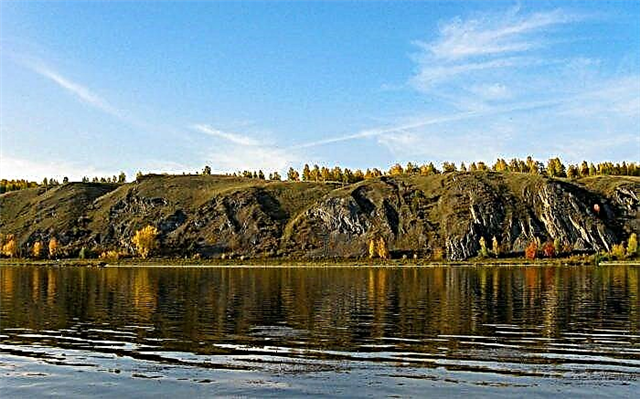
Kemerovo Regional Museum of Local Lore
Founded in 1929, it currently has several buildings. In addition to exhibits traditional for local history museums, it owns one of the largest paleontological collections in the country. In addition, funds and exhibitions are divided into three categories: history, military history, nature. It also contains most of the gifts that Aman Tuleyev, who served as governor, received.

Kemerovo Regional Museum of Fine Arts
Originally existed as a gallery since 1969, it has had its current name and status since 1991. For the most part, it houses a collection of works of art from the late 19th and early 21st centuries. There are exhibitions telling about the works of masters from different regions. Also on display are icons painted in the 18th century and later. Temporary exhibitions are also held, both from their own funds and from imported ones.

F.M.Dostoevsky Museum in Novokuznetsk
Founded in 1980. Opened on the street where the writer was. In 1991, a major restoration was completed. The interior and exterior decoration corresponds to the time when the writer lived, although the necessary changes were made to create the exhibition: documents, personal belongings, old editions of books. Several educational programs have been developed on its basis. Lectures and thematic events are held.

Novokuznetsk Art Museum
It was formed on the basis of local history, gained independence in 1961. The exposition is located in 4 spacious halls, there is a storage facility. From time to time, the funds are partially exposed, replacing the main exhibits. The collection consists of a collection of works by both domestic and foreign classics, as well as contemporary Siberian and metropolitan painters. Not only painting is presented, but also graphics, icons, sculpture.

Embankment of the Tom River in Kemerovo
Conditionally Tom divides the city into two parts. The left-bank embankment is a full-fledged attraction of Kemerovo. It is especially crowded here in summer. In addition to the river view and sculptural compositions, tourists and locals are attracted by the ennobled area, comfortable benches, good lighting in the evening, entertainment such as street musicians, the opportunity to ride a bicycle or rollerblades.

Park of Miracles in Kemerovo
A place to entertain the whole family and people of all ages. On the territory there are 30 attractions, picnic areas, sports grounds (volleyball and tennis), about 10 cafes and many outlets with fast food, a shooting range, and slot machines. A brass band performs on weekends. All sorts of holidays are held to coincide with important city dates. There are programs for children's leisure.

Novokuznetsk Drama Theater
For the first time, its creation was announced in 1931. There were problems with the troupe and forced relocations, but the audience followed the theater. 30 years later he received his own building, specially built for him. Performances are held on a regular basis. Guests from other regions are accepted, and the artists themselves go on tour and participate in festivals. From 2007 to 2010, the theater building was reconstructed.

Transfiguration Cathedral in Novokuznetsk
It was founded at the end of the 18th century, but the construction took more than 40 years. Style - classicism with elements of Siberian baroque. Has 3 limits: Nicholas the Wonderworker, Transfiguration, John the Baptist. Like many religious institutions, after the revolution it was closed, plundered, and used for other purposes. In the early 90s, the ROC was returned, the construction was carried out. Included in the list of cultural heritage of the region.

Znamensky Cathedral in Kemerovo
It was under construction for 5 years until 1996. The structure is crowned with a large gilded dome surrounded by lower small domes. The architectural style is classicism with the addition of Siberian baroque. The cathedral was illuminated by Patriarch Alexy II. The southern limit was consecrated more than 10 years later. The main shrines: banners of the former Church of the Sign, several valuable icons, a copy of the Goalkeeper from Mount Athos, particles of the relics of saints.

Shestakovsky archaeological complex
Includes 24 monuments of various orientations. The remains of ancient mammals and dinosaurs have been found here. Tourists are offered extensive programs in several directions: visiting excavations and other open-air expositions, observing marals, participating in master classes by local craftsmen, and so on. The end of the excursion trip can be lunch on the bank of the Kiya River.

Museum "Archeology, Ethnography and Ecology of Siberia"
Year of foundation - 1986. Location - Kemerovo. The largest of the museums in the region, based in the university. Exhibits are presented that tell about the peoples who inhabited the region in different periods, about culture and customs. Separately collected stuffed animals common in this area. Small fragments of excavations and recreated scenes from the past are also part of the exhibition.
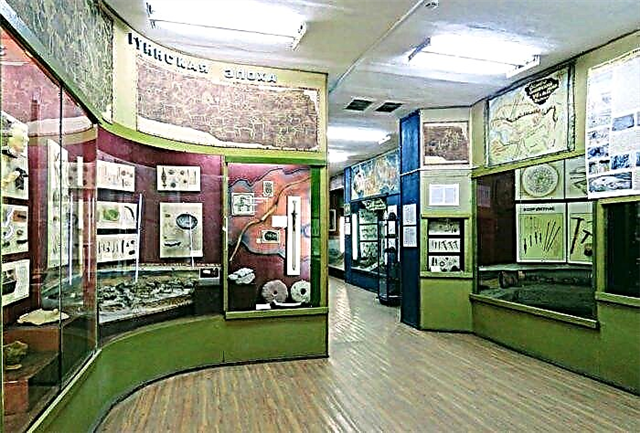
Ethnographic Museum "Tazgol"
Belongs to the territory of the village of Ust-Anzas and the Shorsky National Park. It began to be created in 1991. The area is about 5 hectares. A special feature is the construction of an ethnographic museum in the natural environment and in the open air. Conventionally, the exposition can be divided into two parts: the reconstruction of the settlements of the Bronze Age and the Middle Ages, as well as exhibitions related to the Ust-Anzassky ulus.

Belovskoe reservoir
Also called the Belovsky Sea. Formed on the upper reaches of the Inya River - a tributary of the Ob. The length is about 10 km, and the width is up to 2.3 km. The maximum depth is 12 meters, with an average of about 4.5 meters. The lake is popular for swimming, water skiing and other recreational activities. There are two official beaches: "Belovsky" and "Golden Sands", as well as zones for free and paid fishing. There are recreation centers near the coast.

Holy spring in the village of Gavrilovka
The necessary infrastructure has been built around. The complex includes a chapel, a font, an impressive wooden cross. In 2007, cedars were planted, gazebos and lanterns were installed. One of the legends about the emergence of the source: the spring arose where local priests were killed by the Bolsheviks. In the mid-90s, little remained of the source, but it found a second life in the early 2000s after re-consecration.

Lake Tanai
Located on the border with the Novosibirsk region. Length - 5 km, width - up to 3 km. The greatest depth is 4 meters. The terrain in the district is both steppe and mountainous. There are dense thickets and floating islands. Not far from the lake there are archaeological sites of the Stone and Bronze Ages. Festivals and other events are often held along the coast. There are convenient camping grounds.
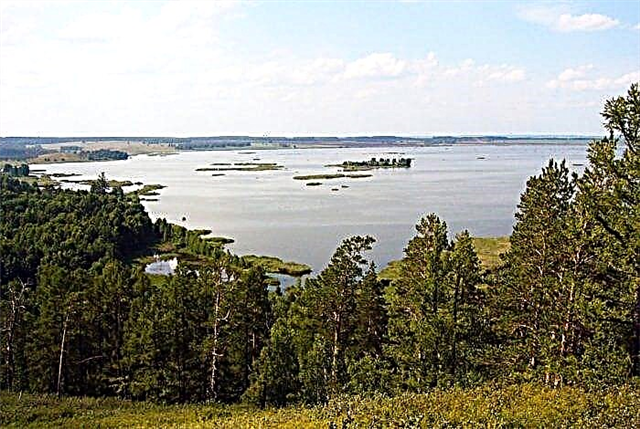
Worship Cross on Mount Kurgan
Installed in the village of Sheregesh in 2001. The total height of the structure is 15 meters (including the concrete base), and the weight is 7 tons. The cross appeared in connection with the celebration of the 2000th anniversary of the Nativity of Christ. The initiative came from the local patriarch. His visit is included in the program of most sightseeing tours. Convenient paths and signs are laid out for tourists.


